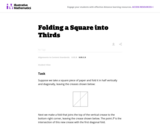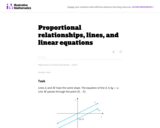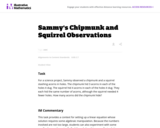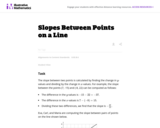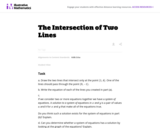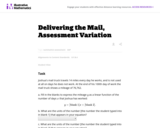
What was the Holocaust and how did it occur? Why do we remember it? How did victims and survivors respond, and how can we honor their voices? How did upstanders respond, and what can we learn from their voices? In this module, students learn about a terrible time period in history, remember the voices of victims, survivors, and upstanders, and at the same time, they develop their ability to determine and track themes, understand the development of characters, identify and track the development of central ideas, and write narratives to honor the memories of those who served as upstanders during the Holocaust.
In the beginning of Unit 1, students discover the topic by examining multiple artifacts and encountering the guiding questions of the module and the culminating performance task. Students read an informational text providing an overview of the Holocaust to build their background knowledge on the scope and gravity of the Holocaust. They are introduced to their anchor text, Maus I: A Survivor’s Tale: My Father Bleeds History, a graphic novel, and closely read the first chapter to understand how dialogue and tone reveal aspects of characters. As students continue to read the text, they track character, plot, and emerging themes. This work prepares students for the Mid-Unit 1 Assessment. In the second half of Unit 1, students continue to read Maus I and track plot and emerging themes. This work prepares students for the end of unit assessment. At the end of Unit 1, students write a summary of the entire anchor text, Maus I, including a statement of a major theme developed throughout the text.
In Unit 2, students analyze a model literary analysis, an expository essay that compares and contrasts the structures and themes of a poem and a novel. Students then closely read a new poem, “Often a Minute” by Magdalena Klein, in order to write their own essay comparing the structure and theme of this poem to their anchor text, Maus I. Students spend two days planning their essay and two days drafting and revising their essay based on peer feedback. For their mid-unit assessment, students are presented with a new poem and answer selected and constructed response questions to compare and contrast its structure and theme with that of Maus I. In the second half of Unit 2, students read excerpts from memoirs written by victims and survivors of the Holocaust and also participate in mini lessons and practice verb conjugation, voice, and mood. This work prepares students for the end of unit assessment. At the end of Unit 2, students answer selected and constructed response questions about verb conjugation, voice, and mood.
In Unit 3, students read informational accounts of upstanders during the Holocaust. Students write reflections about how these individuals took action. Students also participate in mini lessons and practice how to use punctuation such as commas, ellipses, and dashes. This work prepares students for their mid-unit assessment, in which they are presented with a reflection paragraph from an informational text and answer selected and constructed response questions about the use of punctuation and verb voice and mood. In the second half of Unit 3, students create a graphic panel as a representation of one of the summaries they wrote and observe one another’s work in order to scaffold towards their performance task. Students discuss common traits of upstanders that they saw across the texts they read and analyze a model narrative of a fictional interview with an imaginary upstander. Students plan a narrative of their own by creating a profile of a fictional upstander, creating interview questions and answers, and planning an “explode the moment” with sensory details and figurative language to slow down the pacing of a key moment of the narrative. This prepares students for their end of unit assessment, in which they draft their narrative.
To prepare for their performance task, students peer review one another’s narrative and provide feedback and then analyze a model performance task that includes a graphic panel to visually represent elements of the narrative and a reflection on the narrative and panel. Students then plan their own panel and reflection, draft these elements, and prepare to present. For their performance task, students present their graphic panel to an audience and answer questions about their work.
- Subject:
- English Language Arts
- Material Type:
- Module
- Unit of Study
- Provider:
- EL Education
- Date Added:
- 05/17/2024




